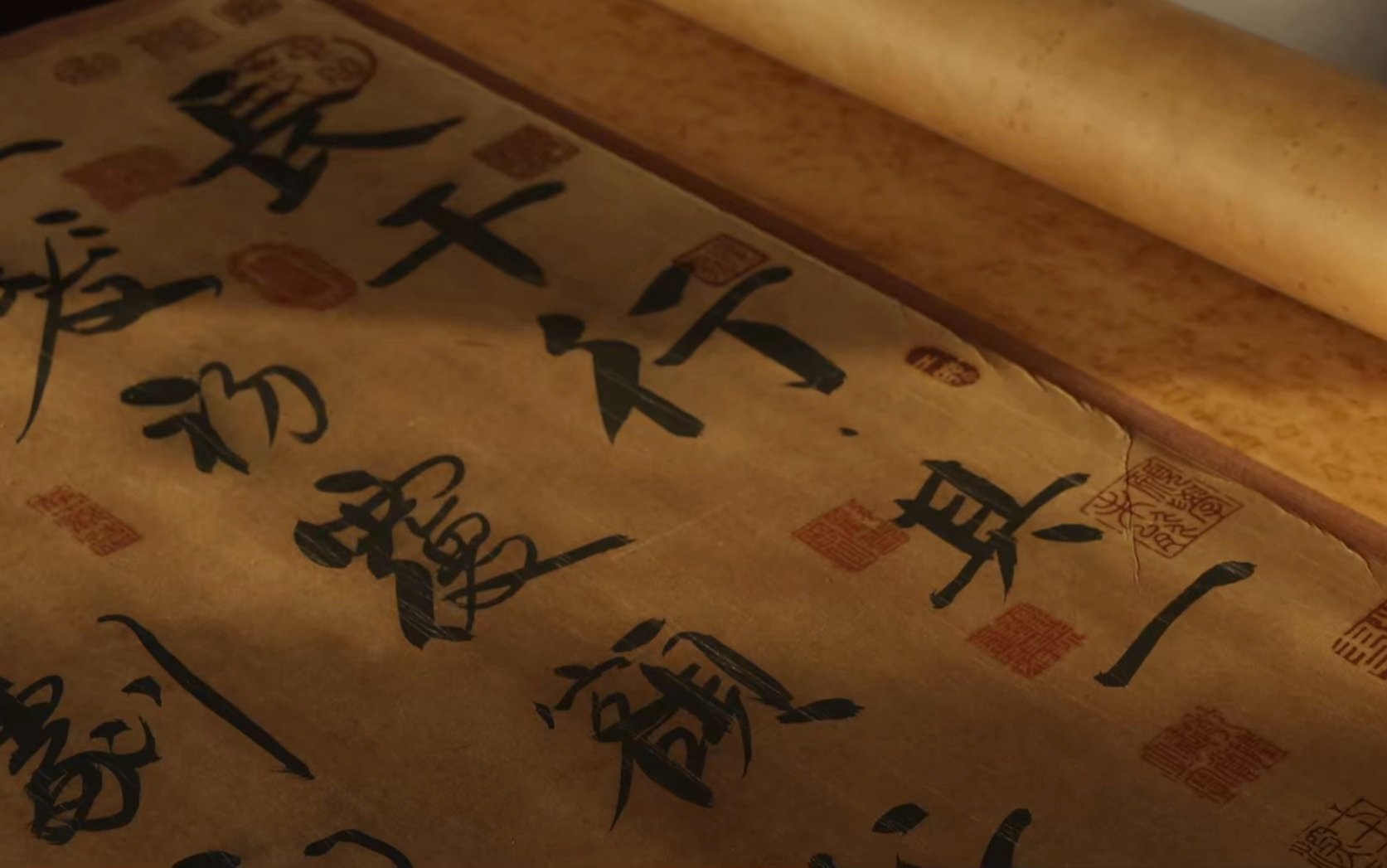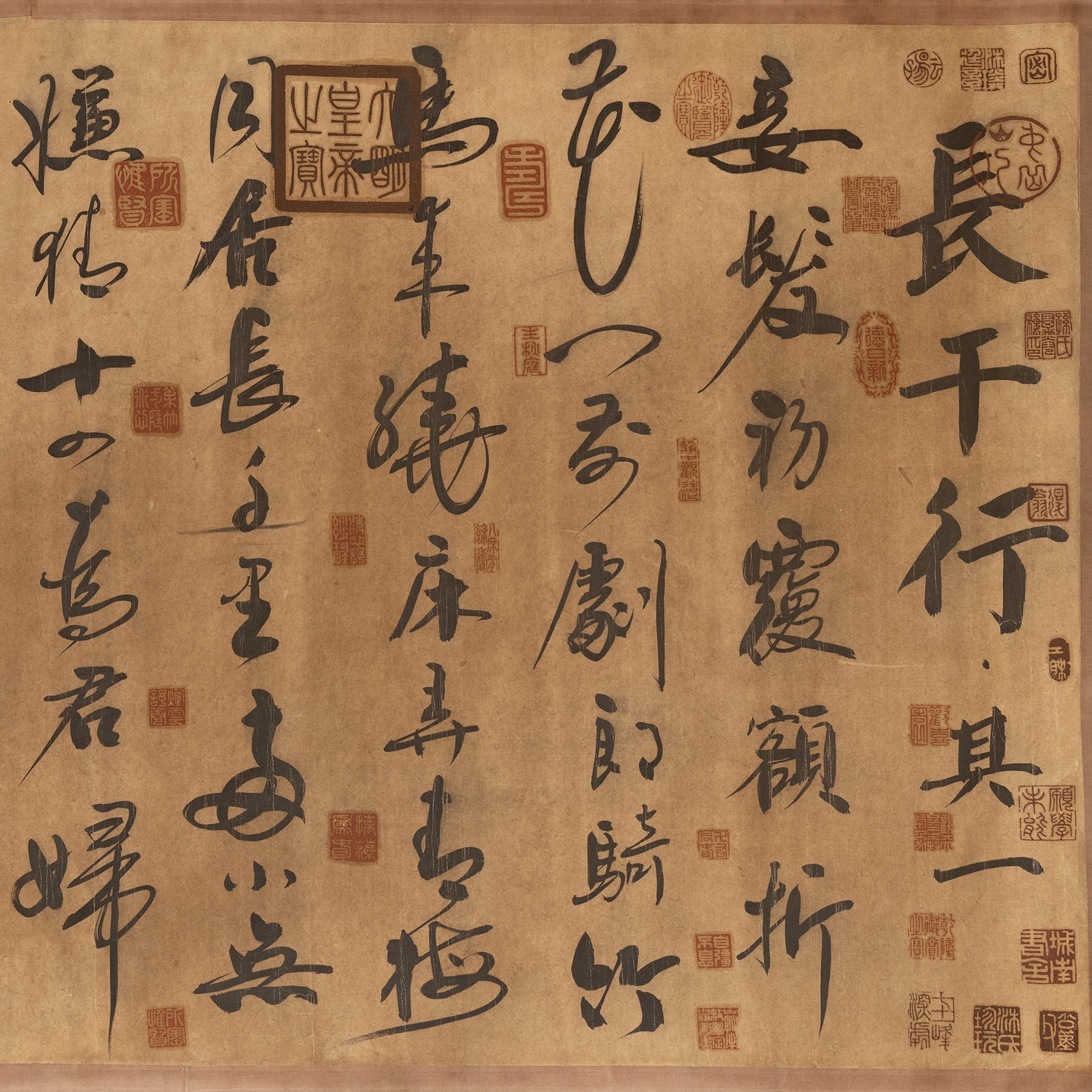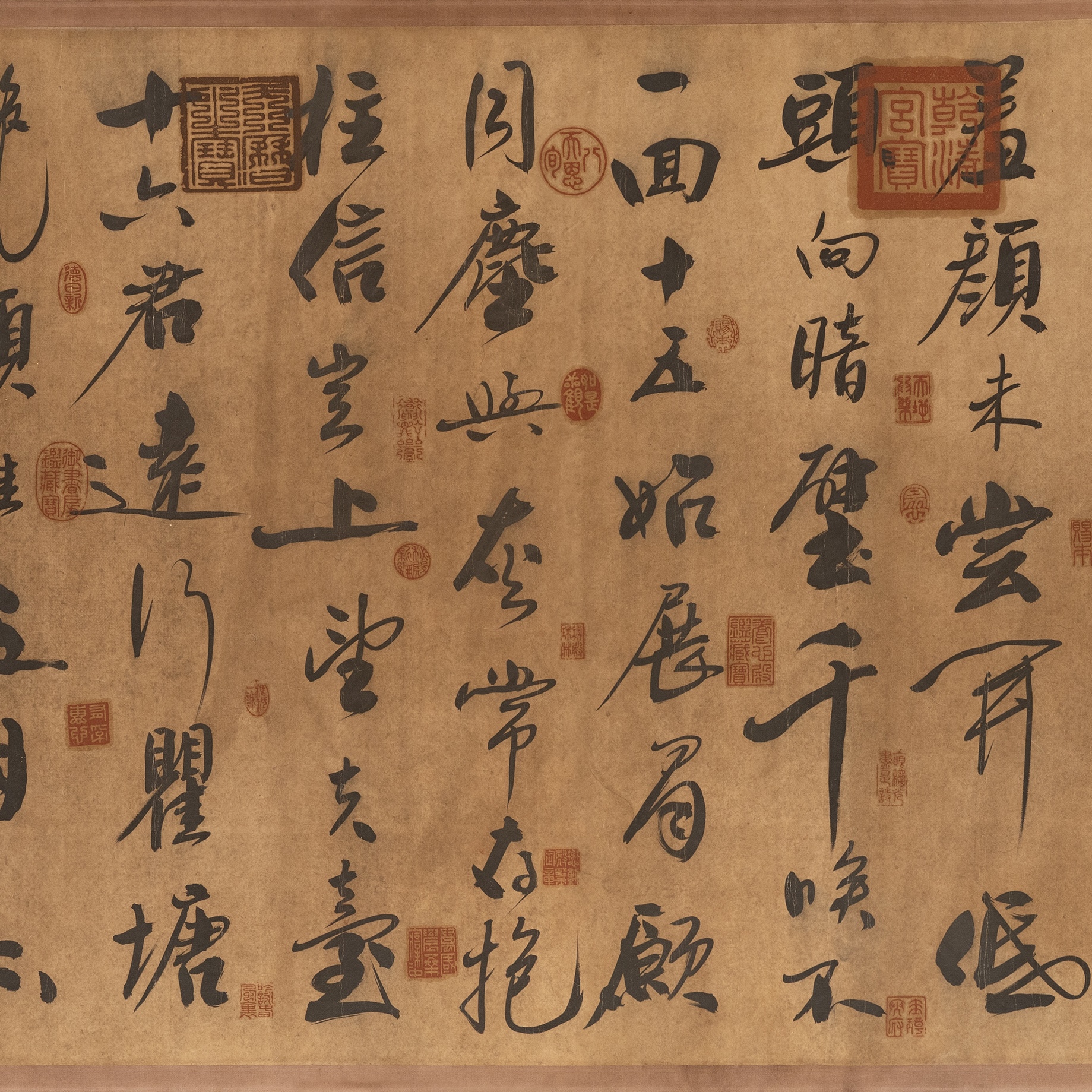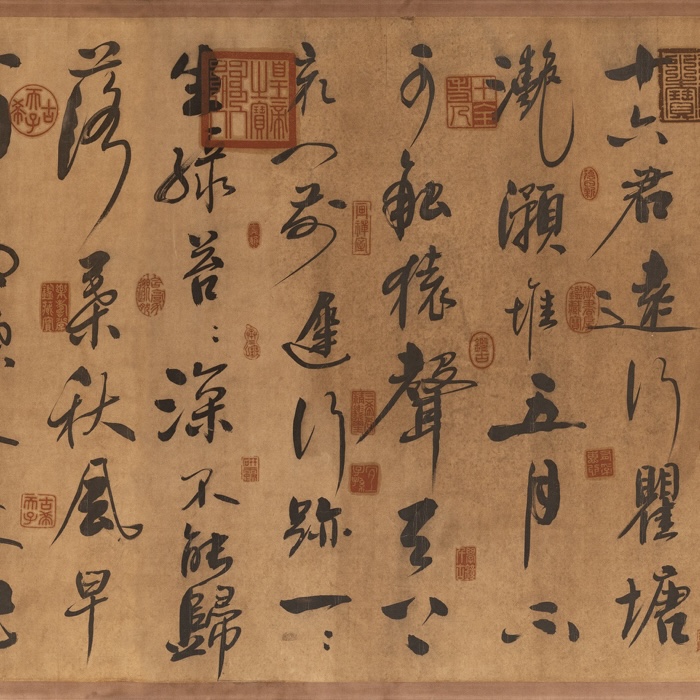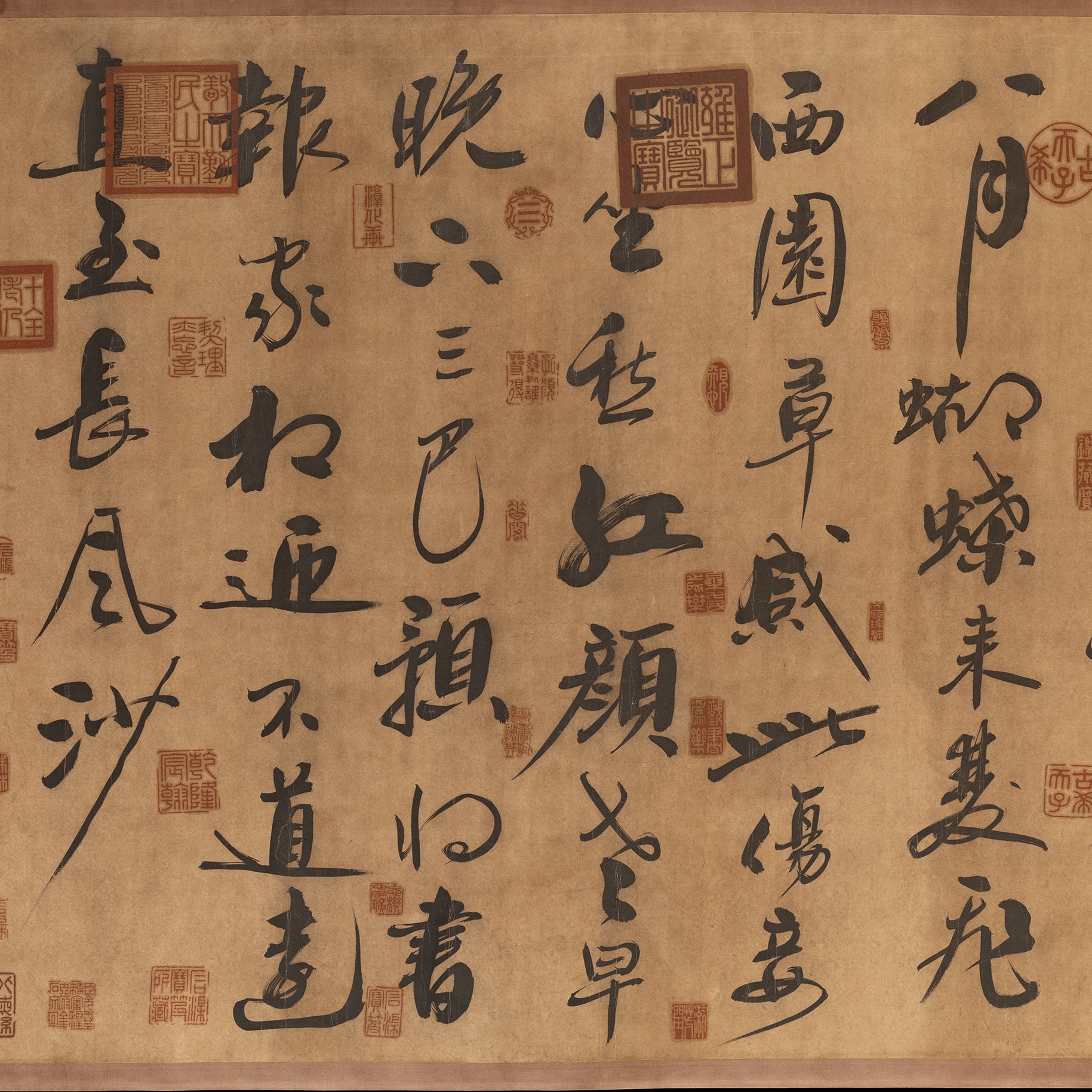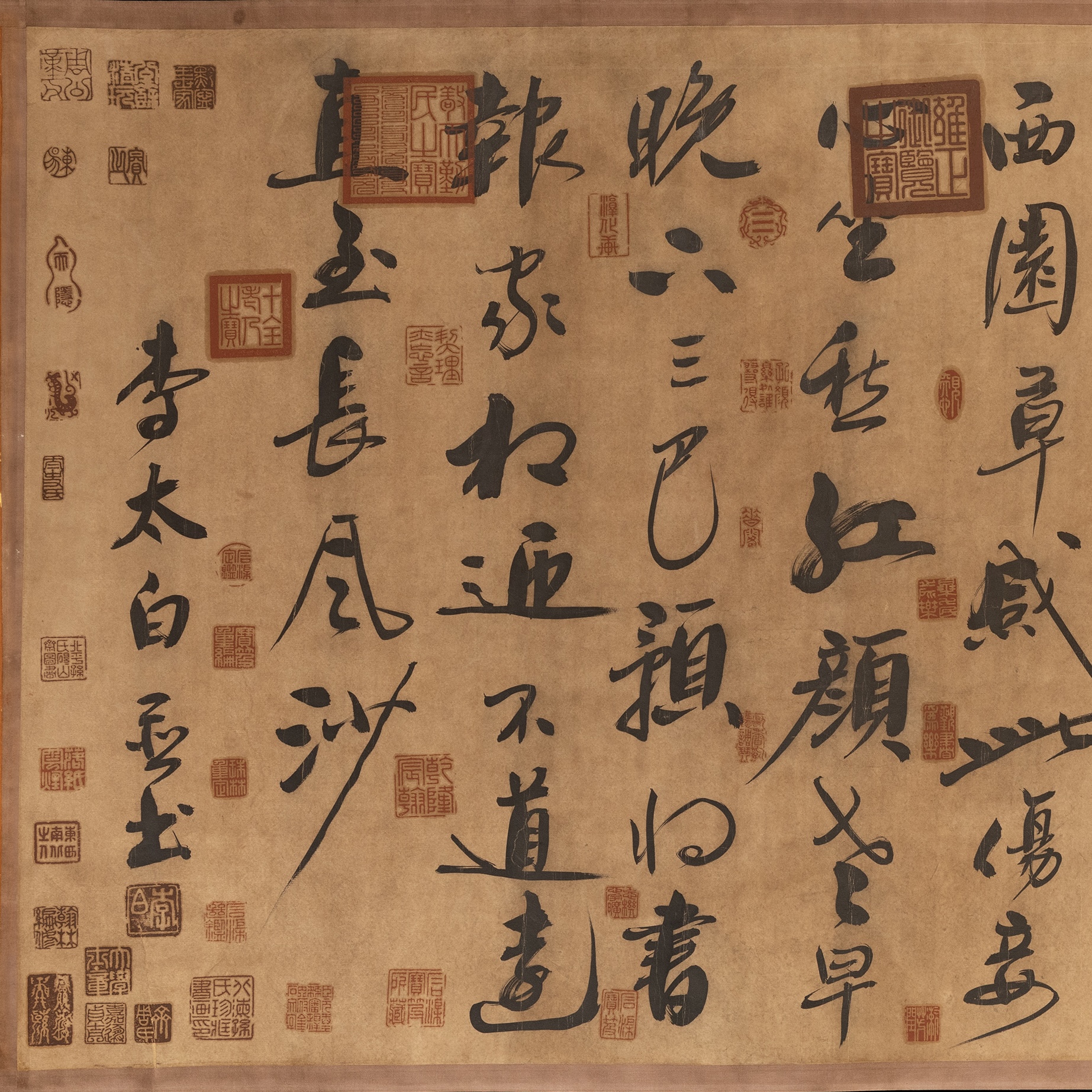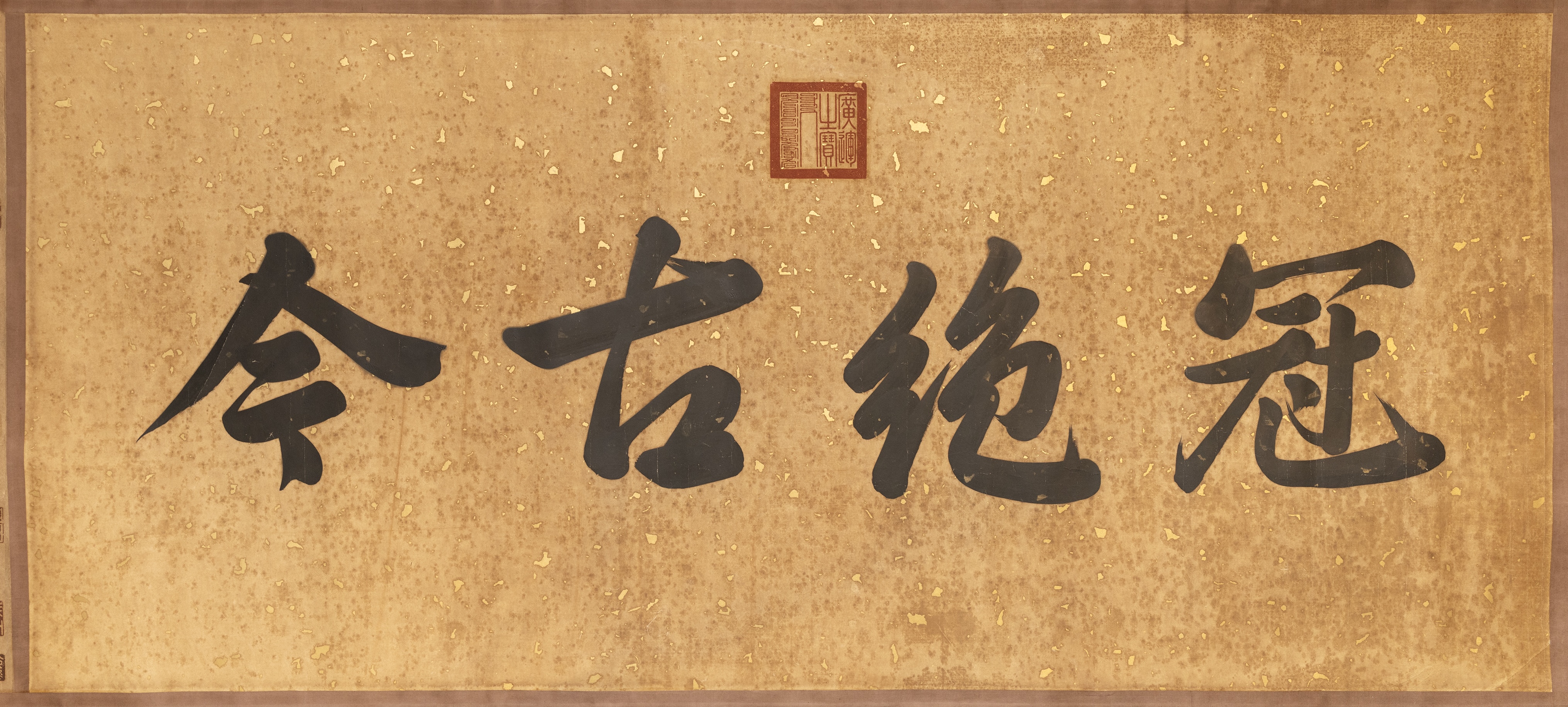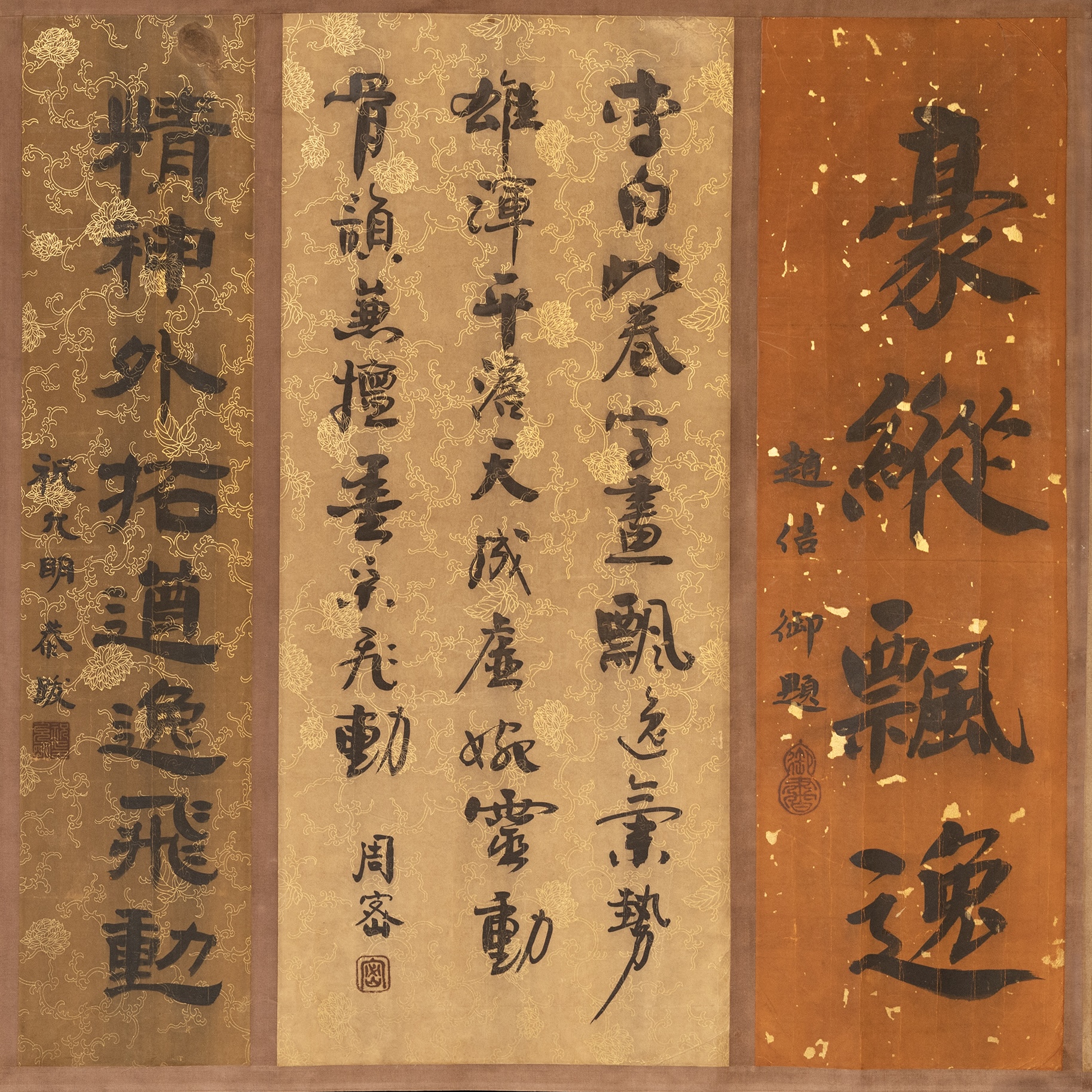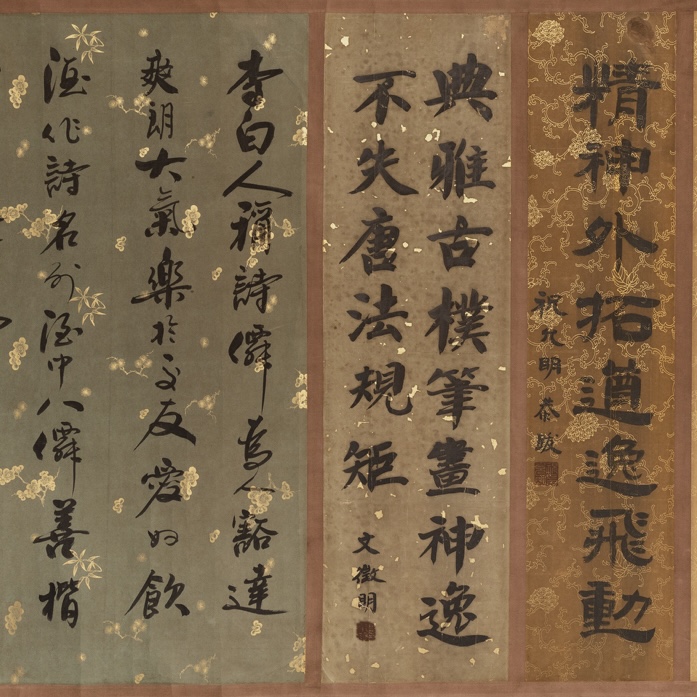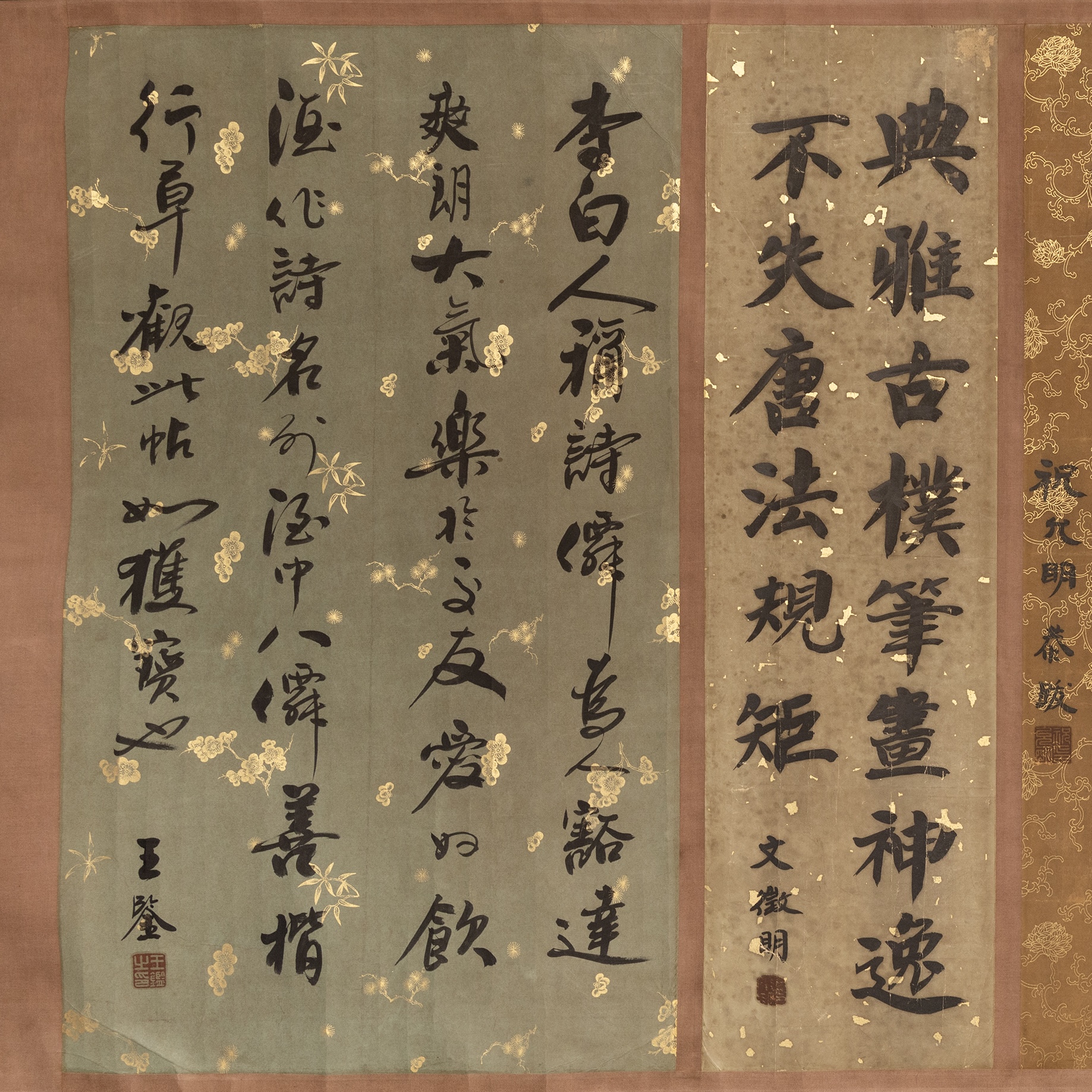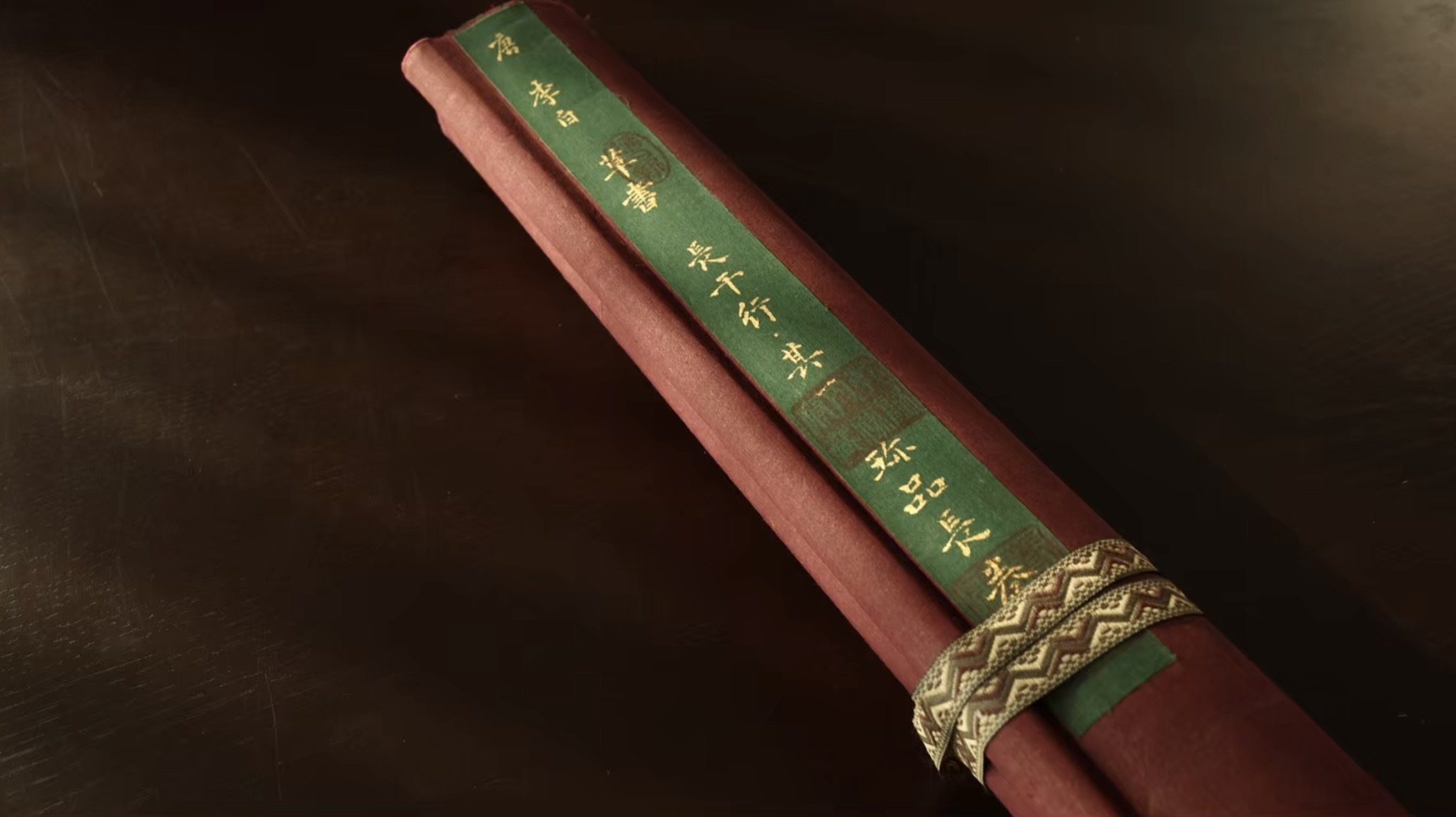Tang Dynasty, Treasured Handscroll of Li Bai's “The River Merchant's Wife: A Letter (Changgan Xing) Part I” in Cursive Script (Caoshu)

Log in to view your Launchpad status.
Start time
2025-10-01
04:00
End time
2025-10-15
04:00
Distribute tokens
2026-10-10
04:00
Estimated time of trading
2026-10-15
04:00
Sale rules
Become a Co-Owner of Li Bai’s Masterpiece
A Millennium Treasure · Tang Dynasty Calligraphy
Li Bai, the “Immortal Poet” of the Tang Dynasty, is celebrated for both his poetry and calligraphy. “Chang Gan Xing · Part I” is not only acclaimed as a “poem as painting” and the pinnacle of Tang poetic narrative, but is also the second publicly surfaced calligraphy work by Li Bai, carrying a thousand years of cultural legacy and recognized as a top-tier global collectible.
Why Is It So Rare?
- Only two pieces have ever been publicly surfaced, making it highly sought after by top global collectors and museums
- Classified as a national-level cultural relic, with irreplaceable cultural value
- Each subscription represents a part in preserving a millennium of cultural heritage
Allocation Plan
Token Name: LIBAI
Issuer: Japanese Collector Family
Total Supply: 10,000,000
Issuance Rounds:
- Alpha A – Founding Collector Round: 20%, 1 USDT / LIBAI
- Alpha B – Institutional Fund Round: 20%
- Launchpad – Public Round: 52%
Underwriter: NCollector
Minimum Subscription: 10,000 USD
Who Can Participate
The Alpha A round targets the earliest investors in the collectible, allowing them to become co-owners of “Chang Gan Xing · Part I”.
Participants will collaboratively promote exhibitions, marketing, IP development, and trading, enhancing market exposure and artistic value while sharing potential future growth.
This round is whitelist-only, open to qualified early investors:
- Art funds, collectors, and auction houses (allocation: 100,000–200,000 USD)
- Social media, exhibitions, film, and media resources (allocation: 50,000–100,000 USD)
- IP licensing, IP collaborations, and development resources for cultural & creative merchandise and other derivatives (allocation: 50,000–100,000 USD)
- NCollector agents (allocation: 10,000–50,000 USD)
- Other partners (allocation: 10,000–50,000 USD)
Request an invitation code:
📧 Email: [email protected]
💬 WeChat: ncollector007
Ownership Benefits
1. Physical Ownership
- Each subscription represents a partial ownership of the physical collectible
- Owner information is permanently recorded on the blockchain and collector registry
2. Exclusive Privileges
- Priority access to exhibitions and in-person viewing
- Voting rights on major decisions, including sale of the artwork
- Early reservation for future art asset subscription projects
- Priority access to IP licensing
3. Derivative Revenue
- Exhibition Revenue: Global tours, distributed proportionally by share
- IP Licensing, Publication, Cultural Merchandise, Co-branding Revenue: Distributed proportionally
- Secondary Market Fee Sharing: Distributed proportionally
Exit & Liquidity
Auctions & Private Sales
- The platform will facilitate the sale of the collectible at auction houses or to top global collectors
- Auction or private sale prices will only be executed if they are significantly above the current round valuation
Secondary Market
- After 12 months from the end of the subscription, investors can freely transfer their shares via the NCollector platform
- If the collectible gains significant market exposure, the platform may launch the secondary market earlier
NCollector is committed to ensuring every art asset is seen by the world and collected by more people.
About this artwork
Provenance of the Artwork
Jiu Mu Lin shi jiazu → Northern Song Ren Boyu → Northern Song Huizong Imperial Collection → Late Song/Early Yuan Zhou Mi Collection → Yuan Wenzong Imperial Collection → Yuan Dynasty Scholar Yuan Shiyuan → Ming Imperial Collection → Ming Mu Ying Family → Shen Zhou → Li Dongyang → Wen Zhengming → Zhan Jingfeng → Ni Yuanlu → Sun Chengze → Qing Kangxi Imperial Collection → Qing Yongzheng Imperial Collection → Qing Qianlong Imperial Collection → Ruan Yuan → Huang Shiling → Zhang Daqian → French Willtonstein Family → 1990s Japanese Collector
Author and Artwork Information
- Author: Li Bai
- Dynasty: Tang
- Dimensions: Not specified
- Material: Silk
- Format: Handscroll
Inscriptions
- Guan Jue Gujin (Unsurpassed Through the Ages) — Qianlong (Guangyun Zhi Bao)
- Hao Zong Piaoyi (Bold and Free) — Zhao Ji Imperial Inscription (Yushu)
- Li Bai’s calligraphy in this scroll is elegant, majestic, naturally flowing, ethereal yet lively, with strength in the strokes without relying on conventional ink methods. — Zhou Mi
- Spirit extends outward, vigorous and free-flowing. — Zhu Yunming (Seal of Zhu Yunming)
- Classic and unadorned, strokes expressive and elegant, adhering to Tang rules. — Wen Zhengming (Seal of Wen Zhengming)
- Li Bai, called the “Poet Immortal,” was open-minded, cheerful, sociable, fond of wine, detached from fame and profit yet virtuous. Observing this scroll is like acquiring a treasure. — Wang Jian (Seal of Wang Jian)
Seal of the Author: Li Bai
Collector’s Seals (Jianzang Yin)
- Mi — Zhou Mi (1232–1298 or 1308, zi Gongjin, hao Caocuang, Xiaozhai, Pingzhou, Xiao Zhai; late life Bianyang Laoren, Si Shui Qianfu, Hua Bu Zhu Shanren; from Wuxing; famous late Song/early Yuan poet, scholar, and calligraphy & painting connoisseur)
- Zhongyue Shanren — Zhan Jingfeng (Ming dynasty, 1532–1602; from Liutang, Xiuning, Huizhou)
- Sun Shi Wan Juan Lou Yin — Sun Chengze (1592–1676, zi Erbei / Erbo, hao Beihai, Tuigu; from Yidu, Shandong; Ming Chongzhen jinshi; Qing official, Minister of Personnel, Left Vice Minister)
- De Weng — Ren Boyu (c.1047–1119, famous Northern Song remonstrator)
- Gong Lai — Huang Shiling (zi Mufu, hao Juansou; founder of Yishan school of seal carving; late Qing calligrapher, painter, and seal artist)
- Yuan Xue Wei Neng — Wen Zhengming (1470–1559, name Bi, zi Zhengming, hao Hengshan Jushi; Ming painter, calligrapher, scholar, poet)
- Chengnan Shushe — Yuan Dynasty Scholar Yuan Shiyuan (1306, zi Yanzhang, hao Jucun Laoren; famous Yuan poet and scholar)
- Gong Jin Fu — Zhou Mi
- Mu Pu Ting Zhang — Ming Mu Family
- Lin Shi Zhenwan — Jiu Mu Lin Family
- Yun Yi Zi
- Huanxi Yuan — Qianlong
- Guan Tiandi Shengwu Qixiang — Qianlong
- Qianlong Yushang Zhi Bao — Qianlong
- Qishi Yi Feng Shenchu — Li Dongyang
- Jia Zhu Yangzhou Wenxuan Lou Sui Cao Xian Gu Li — Ruan Yuan
- De Ri Xin — Qianlong
- Qianlong Yulan Zhi Bao — Qianlong
- Jing Zhong Guan Zaohua — Qianlong
- Wanyou Tongchun — Qianlong
- Ziqiang Buxi — Qianlong
- Fengchi Bianding Neifu Shuhua — Qianlong
- Shou — Qianlong
- Sheng Qiu Ting — Qianlong
- Ji Xi You Yu Xiang — Qianlong
- Da Ming Huangdi Zhi Bao — Ming Dynasty
- Qingxin Shu Miao Li — Qianlong
- Chizao Wei Chun — Qianlong
- Suo Bao Wei Xian — Qianlong
- Songzhu Yi Ting Daoxin — Qianlong
- Yanyun Shujuan — Qianlong
- Suo Bao Wei Xian — Qianlong
- Ciben — Qianlong
- Qianqinggong Bao — Qianlong
- Tian Zai Wei Shi — Qianlong
- Xie Xin — Qianlong
- Ru Yan Qiu Guang Jin Shi Shi — Qianlong
- Guizhang Wenfu — Qianlong
- Ciben — Qianlong
- Yangxindian Jiancang Bao — Qianlong
- Tian En Ba Xun — Qianlong
- Ru Shi Guan — Qianlong
- Mi Dian Zhulin — Qianlong
- Maoqin Dian Jianding Zhang — Qianlong
- Zheng Kui Zhai
- Mi Dian Xin Bian — Qianlong
- Wanguo Nongsang Wumei Zhong — Qianlong
- Tianli Zhi Bao — Yuan Wenzong
- Gen Di Yi Cheng — Qianlong
- Yin Yong Chunfeng Li — Qianlong
- De Ri Xin — Qianlong
- Yushufang Jiancang Bao — Qianlong
- You Fu Hui Ye — Qianlong
- Shi Quan Laoren — Qianlong
- Jian Gu — Qianlong
- Xue Jing Qian Gu — Qianlong
- Hua Chan Feng — Qianlong
- Sanxi Tang Jingjian Xi — Qianlong
- Yi Zisun — Qianlong
- Huangdi Zhi Bao — Qianlong
- Chen Han — Qianlong
- Feng San Wusi — Qianlong
- Yan Lu — Qianlong
- Han Hao Miao Ran — Qianlong
- Gu Xi Tianzi — Qianlong
- Leshou Tang Jiancang Bao — Qianlong
- Gu Xi Tianzi — Qianlong
- Yunxia Si — Qianlong
- Neifu Zhen Cang — Qianlong
- Yongzheng Yulan Zhi Bao — Yongzheng
- Jian Tian Xin — Qianlong
- Le Wanmin Zhi Suo Le — Qianlong
- Guan Shu Wei Le — Qianlong
- Shufang Zhai — Qianlong
- Qian — Qianlong
- Kong Yan Le Chu Shui Xun De — Qianlong
- Chui Lu — Qianlong
- Yi Ou Xiang Ru Ting Diao Qin — Qianlong
- Chunhua Xuan — Qianlong
- Wangji Xinyu Kuang — Qianlong
- Shiqu Baoji — Qianlong
- Jing Tian Qin Min Zhi Bao — Kangxi
- Qi Li Yi Wang Yan — Qianlong
- Qianlong Chenhan — Qianlong
- Shiqu Baoji Suo Cang — Qianlong
- Chen Yuan Feng Er Chi Shen Shi Neifu Jinshi Wenzi — Ruan Yuan
- Shi Quan Laoren Zhi Bao — Qianlong
- Shiqu Dingjian — Qianlong
- Baoji Chongbian — Qianlong
- Zhulin Fu Wei — Qianlong
- Shiqu Jijian — Qianlong
- Beihai Sun Shi Zhen Cang Shuhua Yin — Sun Chengze
- Qianning Wang Shijia — Ming Mu Ying Family
- Gong Yu Qingwan — Qianning Wang Mu Ang
- Bao Zhi
- Li Bai
- Qi Zhou Shi — Zhou Mi
- Daxueshi Zhang — Ming Imperial Grand Secretariat Official Zhang
- Jia Dun Zhenji — Shen Zhou
- Zhou Gong Jin Fu — Zhou Mi
- Dong Yi
- Tian Yin
- Xiao Xing Yin
- Ta Shi Shi — Ni Yuanlu
- Beiping Sun Shi Ai Shan Zhai Tushu — Sun Chengze
- Luo Zhi Yun Yan — Qianlong
- Dong Xi Nan Bei Zhi Ren — Zhang Daqian
- Hanlin Bianxiu — Qianlong
- Wu Yi
Text of the Poem
Chang Gan Xing · Qi Yi
My hair first covered my forehead, picking flowers before the door.
My lord rode a bamboo horse, circling the bed, playing with green plums.
We lived together in Chang Gan li, two children without suspicion.
At fourteen I became your wife, my shy face never opened.
I lowered my head to the dark wall, a thousand calls went unanswered.
At fifteen I began to raise my brow, wishing to be with dust and ash.
I often held the pillar of faith, not gazing at the Husband’s Platform.
At sixteen my lord traveled far, through Qutang Yanyu rapids.
May was untouchable, monkey cries mourned in the sky.
Footprints lingered at the door, each sprouting green moss.
The moss grew too deep to sweep, fallen leaves arrived early with the autumn wind.
In August, butterflies came, flying in pairs over the western garden grass.
Feeling this saddened my heart, sitting, worrying that my beauty will fade.
Soon I will descend to Sanba, sending letters home.
Meeting you, I do not speak of distance, straight to Changfeng Sha.
— Calligraphy by Li Taibai
Artwork Description
Chang Gan Xing · Qi Yi, handscroll on silk, ink brush, cursive script (caoshu), five-character poem, signed Li Taibai bishu. Total 160 characters. The calligraphy is vigorous, bold, and free-flowing, with uneven rhythm and natural vitality. The title is precise and compact, while the body flows gracefully, showing tension and release in brushwork. Viewing the scroll, one can sense the character of the poet himself: elegant, bold, and transcendent. The opening includes Qianlong’s imperial inscription “Guan Jue Gujin,” praising the work, while the end carries Huizong’s inscription “Hao Zong Piaoyi,” accurately characterizing its style. The scroll features 109 collector’s seals spanning emperors, nobles, and literati; Qianlong’s seals alone total over 70. This handscroll’s provenance is exceptionally well-documented and historically rare.
Creation Background
Chang Gan Xing · Qi Yi is one of a pair of poems by Li Bai, written during his first visit to Jinling (modern Nanjing) in late 725 or early 726 (Kaiyuan 14). Chang Gan is a place in today’s Qinhuai District, Nanjing. The poem narrates a merchant woman’s deep love and longing for her husband traveling far for business. The narrative evokes the innocent childhood love, the waiting and yearning, and transforms into imagery like butterflies in August. Li Bai uses the treacherous Qutang rapids and moss at the doorstep to depict her intense devotion. While Li Bai is famed for his poetry, few of his calligraphic works survive; this scroll allows a rare glimpse into the emotional depth and aesthetic elegance of the Tang poet.
Author Biography
Li Bai (701–762)
Zi Taibai, also known as Chang Geng, styled Qinglian Jushi. Ancestral home in Longxi Chengji (near modern Tianshui, Gansu), born in Suiye (present-day Tokmak, Kyrgyzstan). Summoned to serve in the Hanlin Academy in 742 (Tianbao era), later slandered and left the capital. He traveled widely, indulging in poetry and wine. Li Bai was a great Tang poet, also skilled in calligraphy. His poetry creatively employed Romantic techniques, achieving perfect unity of content and form, earning him the title Shixian (“Poet Immortal”). Poems collected in Li Taibai Ji.
Colophon Authors’ Biographies (Partial Representatives)
Qianlong Emperor, Qing Gaozong Aisin Gioro Hongli (1711–1799), the sixth emperor of the Qing dynasty, also known as Changchun Jushi, Xintian Zhuren; in later years called Guxi Tianzi, Shiquan Laoren. The reign title “Qianlong” signifies “Prosperity of Heaven’s Way.” He reigned for sixty years, and after abdication continued to exercise supreme power as regent for three years, for a total of sixty-three years and four months—the longest actual rule in Chinese history. He was also the longest-lived emperor. His reign coincided with the peaceful prosperity of the Qing dynasty. Passionate about the arts, Qianlong promoted the development of craftsmanship, elevating artistic techniques to unprecedented heights. He was also an expert in antique appraisal and an avid collector, playing an important role in cultural preservation.
Song Huizong, Zhao Ji (1082–1135), emperor of the Northern Song dynasty, and accomplished painter and calligrapher. During his reign, he amassed an extensive collection of antiquities and paintings, reaching unprecedented scale. He personally oversaw the Hanlin Painting Academy, developing imperial court painting. He gathered painters widely, established the Xuanhe Painting Academy, trained outstanding painters including Wang Ximeng, and organized/editing the Xuanhe Shupu, Xuanhe Huapu, and Xuanhe Bogutu, which remain valuable references in art history. Skilled in both calligraphy and painting, he created the “Slender Gold” script. His painting achievements were also remarkable, with representative works including Ruihe Tu, Furong Jinqi Tu, Hong Liao Bai E Tu, and Chitang Qiu Wan Tu.
Zhou Mi (1232–1298), zi Gongjin, hao Caocuang, also called Xiaozhai, Pingzhou, Xiao Zhai; later known as Bianyang Laoren, Si Shui Qianfu, Hua Bu Zhu Shanren. Born in Licheng (now Jinan, Shandong), resided in Qiantang (now Hangzhou, Zhejiang). Poet, scholar, and calligraphy/painting connoisseur of the late Song and early Yuan. His family owned many important calligraphy models and paintings, which he expertly appraised. Skilled in composing poems, particularly on plum, bamboo, orchid, and rock subjects. His work is elegant, rich, and metrically strict. Often paired with Wu Wenying (hao Mengchuang), collectively called “Er Chuang.” Also proficient in calligraphy. His writings include poetry collections Caocuang Jiushi, Pingzhou Yudi Pu, Yunyan Guoyan Lu, Haoran Zhai Yatan; compiled Juemiao Hao Ci Jian covering over 100 lyricists; historical note collections include Wulin Jiushi, Qidong Yeyu, Guixin Zashi.
Zhu Yunming (1461–1527), zi Xizhe, nicknamed Zhi Shan due to a unique appearance and an extra finger on his right hand; also called Zhu Jingzhao. From Changzhou (now Suzhou, Jiangsu). Famous Ming dynasty calligrapher, skilled in poetry and literature, widely renowned for his calligraphy. One of the “Four Talents of Wu” alongside Tang Yin, Wen Zhengming, and Xu Zhenqing; representative calligrapher of mid-Ming along with Wen Zhengming and Wang Chong. Early regular script followed Zhao Mengfu and Chu Suiliang, drawing inspiration from Ouyang Xun and Yu Shinan, pursuing the style of the “Two Wangs.” Cursive script followed Li Yong, Huang Tingjian, and Mi Fu, with deep mastery, especially innovative and flamboyant in later years. Representative works include Taihu Shijuan, Konghou Yin, Chibi Fu, as well as surviving Liu Ti Shu Shi Fu Juan, Cursive Du Fu Shi Juan, Nineteen Ancient Poems, Cursive Tangren Shi Juan, and Cursive Shihan Juan.
Wen Zhengming (1470–1559), birth name Bi, zi Zhengming, style name Zhengzhong, hao Hengshan Jushi, also known as Wen Daizhao; from Changzhou (now Suzhou, Jiangsu), ancestral home Hengshan. A leading Ming dynasty painter, calligrapher, scholar, and poet; one of the Wu School masters, ranked with Shen Zhou, Tang Yin, and Qiu Ying as the “Ming Four Masters.” Together with Zhu Yunming, Tang Yin, and Xu Zhenqing, counted among the “Four Talents of Wu.” Versatile in painting and calligraphy, particularly noted for landscapes and small regular script, with elegant, refined style. Early career included repeated unsuccessful imperial exams; in 1523 (Jiajing 2) admitted to Hanlin Academy as a scholar, participated in compiling Wuzong Shilu. Retired four years later to focus on art for over thirty years. Works include poetry, painting, inscriptions, and model calligraphy, representative pieces such as Zhenshang Zhai Tu, Gumu Hanquan Tu, Qianhou Chibi Fu in small regular script. His sons Wen Peng and Wen Jia continued the family legacy, with Wen Peng founding the Wu School seal carving style, influencing future seal art.
Wang Jian (1598–1677), zi Yuanzhao / Yuanzhao, hao Xiangbi, Ranxiang Anzhu; from Taicang, Jiangsu; grandson of Ming Minister of Justice Wang Shizhen. One of the “Six Masters of Early Qing” or “Four Wangs and Wu Yun,” painter of late Ming and early Qing. Specialized in landscapes, continuing the traditions of Dong Yuan, Juran, and “Four Yuan Masters.” Early style influenced by Huang Gongwang, similar to Wang Shimin; mid to late career absorbed methods from Juran and Wang Meng, using central tip brush, rich ink tones, fine texture. Produced green-and-blue landscapes with methodical layering, simple and elegant charm. Style evolved from Wang Shimin but maintained admired antiquarian skill. Mentored Wang Hui and Wu Li before they gained fame. Works include Ranxiang An Ji, Ranxiang An Huapu, among others.
